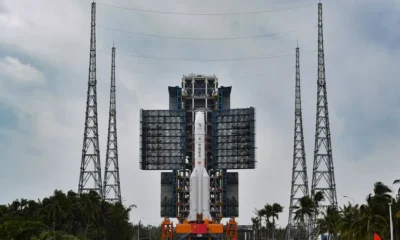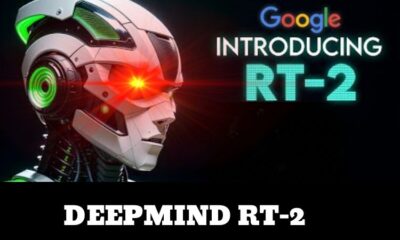Tech
Artificial Intelligence versus Machine Learning | What’s the Difference?
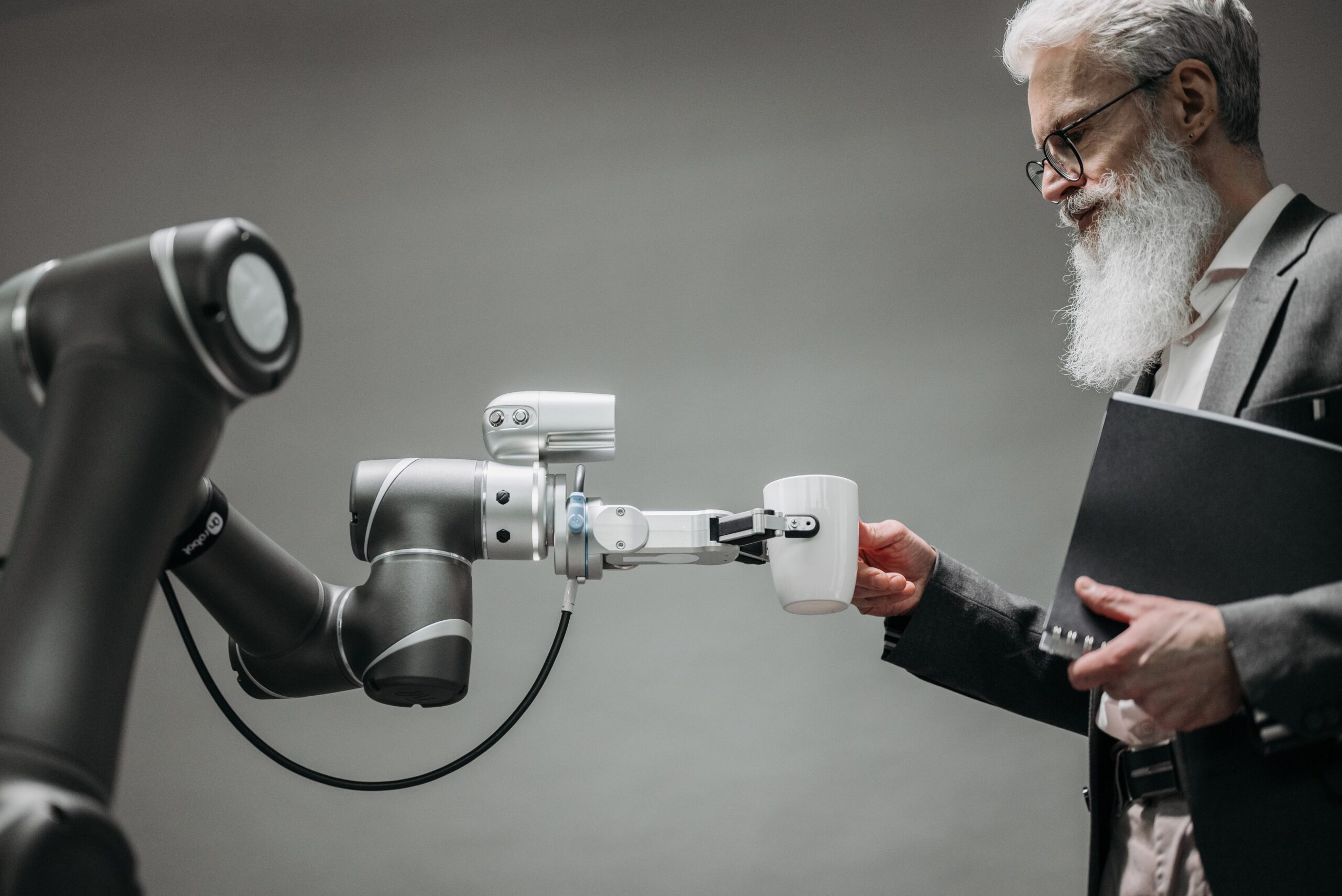
Artificial Intelligence versus machine learning is not a big mystrey to solve. In the technology sector, there are two terms that are often used interchangeably: Artificial Intelligence (AI) and Machine Learning (ML). Despite their close association, these terms refer to different concepts and have distinct applications in various fields. Although the two fields are related, they have distinct differences. In this article, we will explain what machine learning and AI are, and we will compare the Artificial Intelligence versus machine learning in ten solid points.
Artificial Intelligence vs Machine Learning – Explained
The fields of Artificial Intelligence (AI) and Machine Learning (ML) have garnered considerable interest and have been hot topics in the technology industry in recent times. While both fields are related, they are also distinct from one another. Both AI and ML are transforming the way we live and work by enabling machines to perform complex tasks and make decisions without human intervention.
Artificial Intelligence (AI)
AI is the broader field of creating machines that can perform tasks that typically require human intelligence. It is the science of developing intelligent machines that can think, learn, and solve problems like humans. AI systems are designed to simulate human intelligence and perform tasks that require human-level intelligence. The goal of AI is to create machines that can perform tasks that would otherwise require human intervention. AI encompasses various techniques, including machine learning, natural language processing (NLP), robotics, and expert systems.
Machine Learning (ML)
ML is a subset of AI that focuses on the ability of machines to learn from data, make predictions, and improve their performance without being explicitly programmed. In other words, ML algorithms can automatically identify patterns in data and improve their performance over time through experience. ML is about training computers to perform specific tasks without human intervention continually.
Types of Machine Learning

There are three main types of ML: supervised learning, unsupervised learning, and reinforcement learning.
- Supervised Learning: Supervised learning is the most common type of ML, where algorithms learn from labeled data. The data is labeled with the correct answer or output, and the algorithm learns to make predictions based on that data.
- Unsupervised Learning: Unsupervised learning is a type of ML where algorithms learn from unlabeled data. The data does not have any predefined labels or outputs, and the algorithm must find patterns and relationships in the data on its own.
- Reinforcement Learning: Reinforcement learning is a type of ML where an algorithm learns by interacting with an environment and receiving feedback in the form of rewards or penalties.
See How AI password generator tool PassGAN can detect your password within a minute, And It is the product of Machine Learning.
Artificial Intelligence versus Machine Learning – Comparison:
- Scope: AI is a broader field that encompasses machine learning and other techniques, whereas ML is a subset of AI.
- Function: AI is designed to simulate human intelligence and perform tasks that require human-level intelligence, while ML is focused on making predictions or decisions based on data.
- Approach: AI is often based on rule-based programming, where the system is programmed with explicit rules for decision-making. ML, on the other hand, uses statistical methods to learn from data and improve its performance over time.
- Complexity: AI systems tend to be more complex and require more computational power than ML systems.
- Flexibility: ML algorithms can be easily adapted to new data or tasks, whereas AI systems are typically designed for specific tasks and may not be as flexible.
- Human intervention: AI systems often require more human intervention and supervision than ML systems, which can operate autonomously.
- Performance: AI systems can often outperform ML systems in complex tasks that require human-level intelligence, but ML is more effective for repetitive or high-volume tasks.
- Data requirements: AI systems often require large volumes of data to train effectively, whereas ML can be trained on smaller datasets.
- Cost: AI systems tend to be more expensive to develop and maintain than ML systems.
- Applications: AI is used in a wide range of applications, including self-driving cars, robotics, and natural language processing, while ML is used for tasks like fraud detection, recommendation systems, and image recognition.
Summary (Artificial intelligence versus machine learning):
In summary, while AI and ML are related fields, they have distinct differences. AI is a broader field that encompasses various techniques, including machine learning, while ML is focused on making predictions based on data. Understanding the differences between AI and ML is essential for businesses and individuals looking to implement these technologies effectively. Both AI and ML are transforming the way we live and work, and their impact will only continue to grow in the years to come.
Tech
WhatsApp’s New Audio Call Bar Feature Simplifies Calling Experience

Digital platforms like WhatsApp work hard to improve user experience. Meta, WhatsApp’s parent company, has introduced a new feature to enhance calling. Let’s explore this addition and how it helps users.
New Whatsapp Feature:
WhatsApp’s latest feature is the Audio Call Bar feature. It aims to make calls easier for users. It’s first available to select users and will come to iOS soon.
How It Works:
When users make a call, they’ll see a new call bar. This design lets users do other things while on a call. Users can mute or end calls from the interface. When you start a call, you’ll see a new call bar at the top of the app. It stays there even if you switch to another app, making it easier to do other things while you’re on a call. You can also mute or end the call right from this bar, which saves you time and makes things simpler.
Meta’s Improvement:
Meta is committed to making WhatsApp better. They want to make it a top communication platform. It shows their aim to connect people through easy communication.
Seamless Communication:
WhatsApp’s aim is to make communicating easy. The new call bar is part of this. It keeps up their promise to help users communicate easily.
Other WhatsApp Latest Features:
Along with the call bar, there are other new whatsapp features. Apple users have passkeys for secure logins. WhatsApp’s AI assistant also does more now, like generating info and images. All these updates make using WhatsApp better.
Tech
A New Era in Space Exploration: Pakistan’s First Lunar Mission Takes Flight
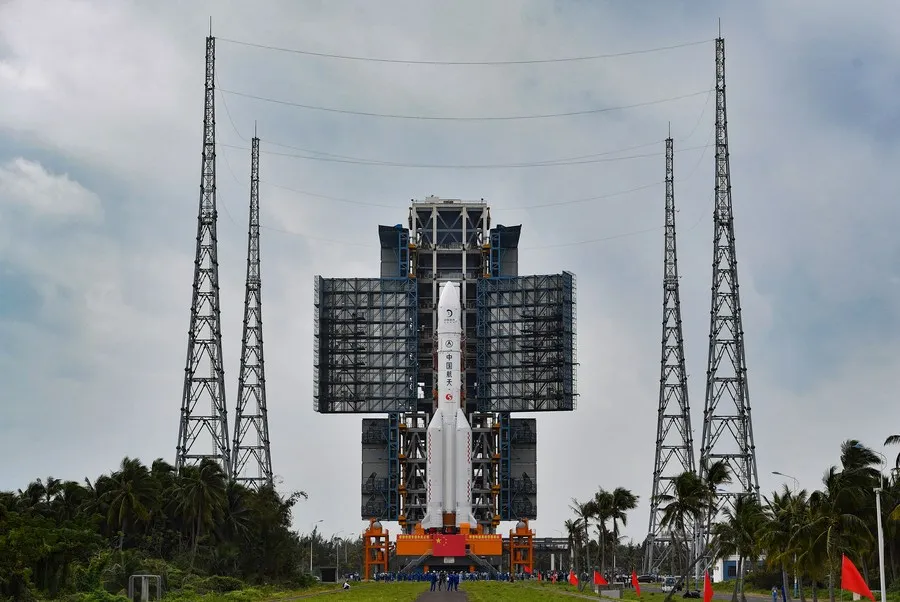
In a historic move that marks Pakistan’s debut in lunar exploration, the country’s first satellite mission named ICube Qamar was successfully launched aboard China’s Chang’e 6 mission from Hainan, China. This monumental event not only underscores the burgeoning space alliance between Pakistan and China but also signifies a pivotal moment in global lunar research efforts.
The Chang’e 6 mission, renowned for its ambitious goal to retrieve samples from the far side of the moon, took to the skies on a Long March-5 rocket from the Wenchang Space Launch Site. This mission is poised to carve a new chapter in lunar exploration by focusing on areas of the moon that have remained largely unexplored by previous missions.
Exploring the Moon’s Mysterious Far Side
China’s venture to explore the enigmatic far side of the moon showcases the nation’s advancing capabilities in space technology. The Chang’e 6 mission is designed to spend two days on the lunar surface, with plans to gather around 2 kilograms (4.4 lb) of lunar samples. These samples are anticipated to shed light on the moon’s composition and uncover secrets about its enigmatic past.
What sets this mission apart is its emphasis on collaboration. The integration of Pakistan’s ICube Qamar satellite into the mission exemplifies a global collaborative effort in the quest for lunar exploration. ICube Qamar, representing Pakistan’s inaugural venture into moon exploration, is poised to play an instrumental role in gathering data from the lunar surface, enhancing our collective understanding of the moon.
A Milestone of Collaboration
The mission’s successful launch has been greeted with widespread acclaim and enthusiasm, especially within Pakistan, where the Prime Minister has celebrated this achievement as a landmark moment for the country’s aspirations in space exploration. This event underscores the profound partnership between Pakistan and China in pushing the frontiers of space technology and exploration.
The Chang’e 6 mission, featuring payloads from various countries, serves as a testament to the spirit of international cooperation that fuels our exploration of the cosmos. Through shared resources, knowledge, and visions, nations are unlocking extraordinary possibilities in space exploration, paving the way to unravel the mysteries of our universe collectively.
Looking Ahead
The success of the Chang’e 6 mission, with Pakistan’s ICube Qamar onboard, heralds a new era of international cooperation in space exploration. It demonstrates the immense potential of collaborative missions in advancing human knowledge and pushing the boundaries of what is possible.
As we await the return of the Chang’e 6 probe with samples from the moon’s far side, we stand on the brink of new discoveries that could redefine our understanding of the moon and beyond. This mission is not just a triumph for Pakistan and China but a victory for the international community’s collective endeavor to explore the unknown frontiers of space
Tech
Musk’s X Debuts its Own Version of YouTube for Smart TVs
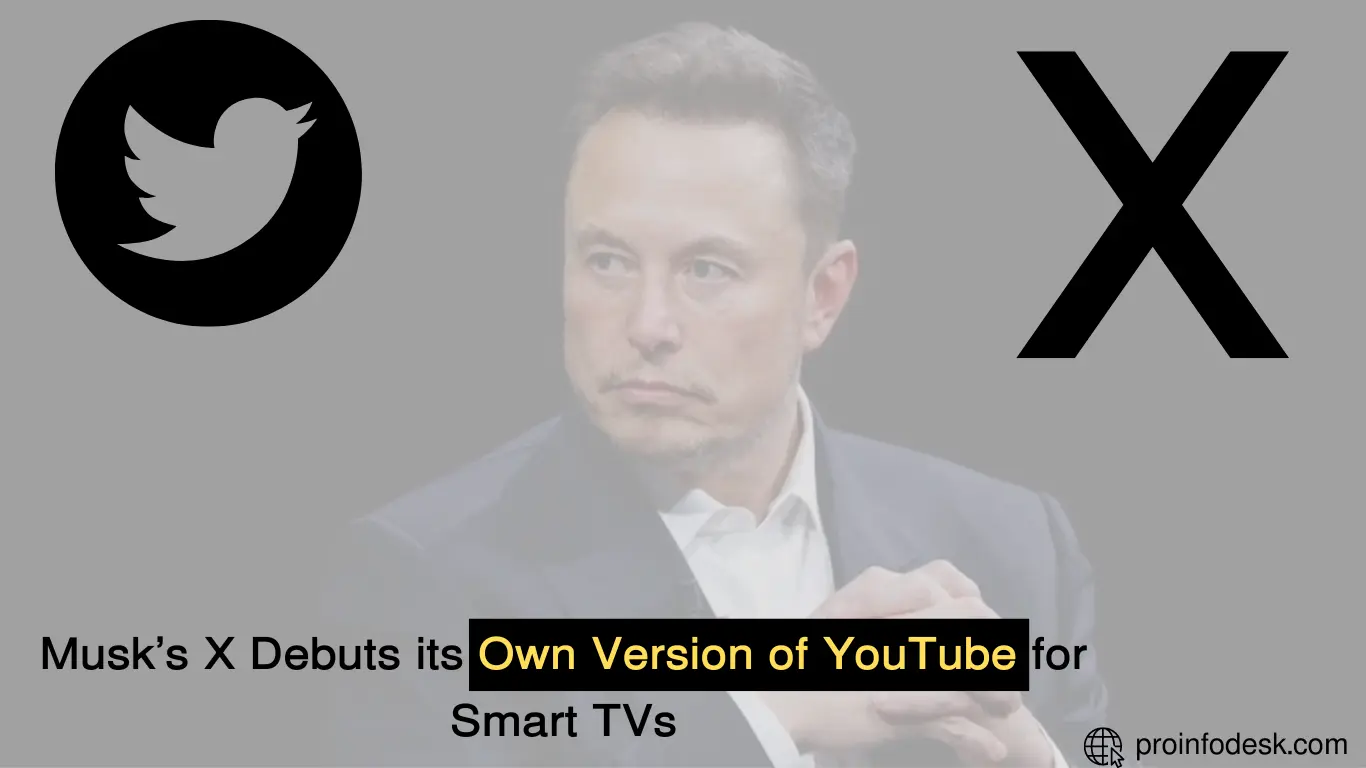
Overview:
Musk’s brainchild, X, is ready to roll out its own television application compatible with Amazon and Samsung smart TVs. With eyes set on rivalling YouTube, the new app, set for launch next week, promises to intrigue users with longer videos on sizeable screens. Musk envisages luring digital influencers and advertisers to X, by providing a platform mirroring YouTube’s TV app. As it grows its footprint in the streaming video sector, X is also primed to battle with platforms like Twitch, Signal, and Reddit. This attempt underlines X’s ambitious transition from a text-based messaging platform to a video-focused arena.
In-depth Insights:
- Musk’s venture, X, is about to usher in its own TV app for Amazon and Samsung smart TVs, to pose a challenge to YouTube.
- The upcoming app, scheduled for release next week, is aimed at captivating users with prolonged videos on expanded screens.
- By imitating the model of YouTube’s TV app, X is geared to captivate the attention of digital influencers and advertisers.
- With a goal to vie with platforms such as Twitch, Signal, and Reddit, Musk envisions a new realm for X.
- Marking its transition to video-based content, X had earlier declared its move to imitate TikTok’s infinite scroll feature.
- Formerly known as Twitter, X has a history of launching multiple TV apps.
- As X aims to dominate the video streaming world, it focuses on celebrities, digital influencers, and video game streaming.
- X has successfully initiated contracts with media personalities Don Lemon and Tucker Carlson for exclusive shows.
- X has been motivating content creators to shift their video content to its platform, guaranteeing increased ad revenue.
- Mr. Beast, a renowned YouTuber, contributed to X’s testing phase by uploading a full-length video and revealing his earnings.
- With a reported decline in user engagement by 30% and loss of significant advertisers, X is grappling to retain its user base and advertising partners.
- Musk’s ownership of X has witnessed a substantial devaluation in its overall assessment.
Source: Fortune.com
-

 How-To Guides1 month ago
How-To Guides1 month agoHow to Get Your Family Registration Certificate NADRA in 2024
-

 iPhone6 months ago
iPhone6 months agoExploring JV iPhones: Prices, Risks, and Rewards in Pakistan
-

 Tech6 months ago
Tech6 months agoWhatsApp’s New Audio Call Bar Feature Simplifies Calling Experience
-

 Phones6 months ago
Phones6 months agoEverything You Need to Know About Jazz Digit 4G Mobile Phones in Pakistan
-

 Phones6 months ago
Phones6 months agoInfinix Zero 30 (4G vs. 5G): Specifications, Features, and Prices in Pakistan
-

 Phones6 months ago
Phones6 months agoZTE Axon 60 Series: Affordable 4G Phones with Unisoc Chipsets
-

 Mobile Packages6 months ago
Mobile Packages6 months agoHow to Check Your Telenor, Zong, Ufone, Jazz SIM Number
-

 Tech6 months ago
Tech6 months agoGuide to Blocking and Unblocking Users on Snapchat

